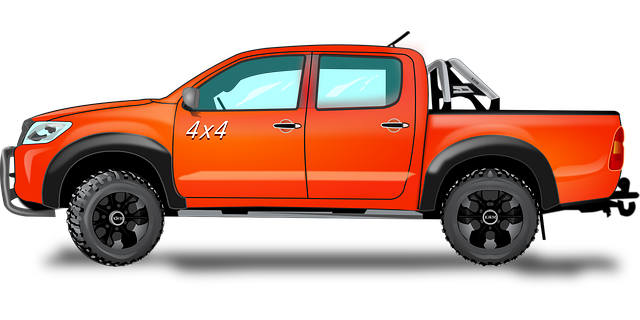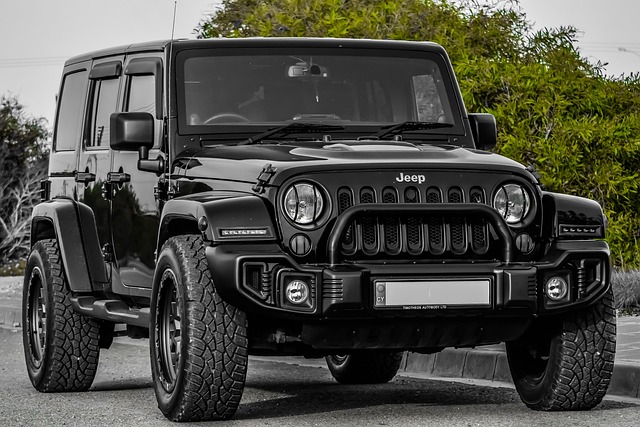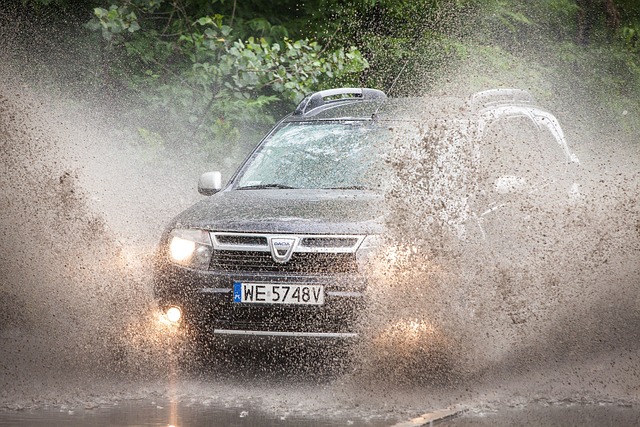Bumper guards are crucial Overland 4×4 accessories for protecting vehicles navigating rough terrain in the Rio Grande Valley (RGV). Made from durable materials like steel or aluminium, they shield expensive components from impact damage and corrosion. With various styles available for RGV models, these guards enhance visibility through integrated lighting and can include winches for added convenience. Selecting the right bumper guard involves considering vehicle compatibility, terrain challenges, and desired functionality. Installation requires preparation and following manufacturer guidelines. Regular cleaning, inspections, and protective coatings ensure their longevity in harsh conditions. Well-chosen and maintained bumper guards enable RGV owners to safely explore diverse landscapes during off-road adventures.
Bumper guards, also known as bull bars or protection bars, are essential overland 4×4 accessories for RGV (Recreational Vehicle) owners. These robust barriers serve a vital role in enhancing the safety and durability of off-road vehicles by safeguarding against potential damage from debris, wildlife encounters, and accidental collisions. Understanding the various types, factors to consider for selection, and installation process is crucial for optimal performance during challenging Overland 4×4 adventures.
- Understanding Bumper Guards: Their Role and Benefits for Off-Road Vehicles
- Types of Bumper Guards: A Comprehensive Overview for RGV Owners
- Choosing the Right Bumper Guard: Factors to Consider for Overland 4×4 Adventures
- Installation Process: Step-by-Step Guide to Fitting Your Vehicle with Bumper Guards
- Maintenance and Care: Ensuring Longevity of Bumper Guards in Harsh Conditions
- Real-World Applications: Success Stories and Tips from Experienced RGV Enthusiasts
Understanding Bumper Guards: Their Role and Benefits for Off-Road Vehicles

Bumper guards, also known as bumper protectors or bumpers, are essential components for off-road vehicles participating in overland adventures. These rugged accessories serve a dual purpose: protecting the vehicle’s front and rear ends from damage during rough terrain navigation and enhancing the overall aesthetic appeal of the vehicle. In the world of overland 4×4 accessories RGV (rough terrain, extreme conditions), bumper guards are highly sought after for their ability to safeguard against impact and corrosion.
Off-road enthusiasts often encounter challenging terrains, including rocky paths, uneven surfaces, and narrow trails. Bumper guards, typically constructed from durable materials like steel or aluminium, act as a buffer between the vehicle’s bumpers and these obstacles. By absorbing the impact during a collision or hard landing, they prevent damage to the expensive front and rear end components of the vehicle. Moreover, these accessories provide additional protection against debris, branches, and other trailside hazards, ensuring a safer driving experience in rugged environments.
Types of Bumper Guards: A Comprehensive Overview for RGV Owners

Bumper guards, also known as bumper bars or protection bars, are essential accessories for Overland 4×4 owners looking to enhance their vehicle’s off-road capabilities and overall durability. These robust barriers are designed to safeguard the front and rear bumpers of your RGV (Recreational Vehicle or Off-Road Vehicle) during extreme terrain navigation, providing added protection against impact damage, scratches, and scrapes.
The market offers a wide array of bumper guard types tailored for different Overland 4×4 models and preferences. From simple, lightweight metal bars to more intricate designs featuring integrated lights and winches, there’s a suitable option for every adventure. Overland enthusiasts often choose bumper guards with off-road lighting systems, allowing enhanced visibility during night drives or in rugged conditions. Additionally, some models incorporate winches, offering the convenience of towing and recovery capabilities right at your vehicle’s front end. These versatile accessories contribute to increased safety and peace of mind while exploring uncharted territories.
Choosing the Right Bumper Guard: Factors to Consider for Overland 4×4 Adventures

When gearing up for an overland 4×4 adventure, selecting the appropriate bumper guard is a crucial decision that influences both your vehicle’s performance and safety. These rugged accessories are designed to enhance your off-road experience by providing extra protection to the front and rear ends of your vehicle. When making your choice, consider factors like your vehicle’s make and model, the terrain you’ll be traversing, and your specific needs for additional functionality. For instance, some bumper guards offer built-in winching points, while others incorporate space for carrying extra gear or water containers.
For an overland 4×4 enthusiast in the RGV (Rio Grande Valley), choosing the right bumper guard means balancing protection with weight and drag, as well as ensuring compatibility with your vehicle’s design and any existing accessories. Opting for high-quality, off-road-specific bumper guards from reputable brands can make a significant difference in your vehicle’s capability and resilience during challenging drives across the diverse landscapes of the RGV.
Installation Process: Step-by-Step Guide to Fitting Your Vehicle with Bumper Guards

Installing bumper guards on your vehicle is a straightforward process, especially with the right tools and accessories like those offered by Overland 4×4-Accessories-RGV. Here’s a step-by-step guide to ensure you fit them correctly:
1. Preparation: Begin by thoroughly cleaning and inspecting both your front and rear bumpers. Ensure they are free of any debris or damage. Gather all necessary tools, including wrenches, screwdrivers, and the bumper guard kits. Make sure your vehicle is parked on a level surface for safety.
2. Removal of Existing Components: Next, carefully remove any existing bumper covers or trim using appropriate tools. This step may vary depending on your vehicle model, so refer to your owner’s manual if needed. Once removed, inspect the bumper structure to ensure it’s sound and free from damage.
3. Fitting the Guards: Position the bumper guards according to your vehicle manufacturer’s guidelines (often provided with the kit). Align them carefully, ensuring they fit snugly into place. Secure the guards using the supplied hardware, such as bolts or brackets. Tighten all fasteners securely but be mindful of not overtightening to avoid damage.
4. Reattachment of Covers: After fitting the guards, reattach any removed bumper covers or trim. Ensure a secure fit and test the operation of any associated features like turn signals or license plate lights.
Maintenance and Care: Ensuring Longevity of Bumper Guards in Harsh Conditions

Maintaining and caring for your bumper guards is essential, especially in challenging off-road conditions. Overland 4×4 accessories like rugged bumper guards often face extreme environments, from mud and dust to sharp rocks and debris. Regular cleaning is a simple yet effective way to prolong their lifespan. After each adventurous ride, take time to wipe down the guard with a damp cloth to remove any accumulated dirt or grime. This prevents rust and ensures the protective barrier remains intact.
Additionally, inspecting for any signs of damage or wear is crucial. Bumper guards are designed to absorb impact, so even minor cracks or deformations should be addressed promptly. Replacing damaged components can prevent further deterioration and maintain optimal protection for your vehicle. In harsh conditions, consider applying a layer of protective coating or sealant to safeguard against corrosion, enhancing the overall durability of these vital overland 4×4 accessories RGV drivers rely on.
Real-World Applications: Success Stories and Tips from Experienced RGV Enthusiasts

In the realm of overland adventures, where rugged terrain meets unpaved paths, bumper guards have emerged as indispensable overland 4×4-accessories-rgv for enthusiasts seeking to enhance their off-road experience. These robust barriers not only safeguard the front end of vehicles but also offer a sense of security when navigating through challenging landscapes. Success stories from experienced RGV (Recreational Vehicle) owners highlight the significant role bumper guards play in preventing damage to their vehicles during intense off-roading sessions. From traversing rocky outcrops to fording shallow streams, these enthusiasts vouch for the protection and peace of mind that well-designed bumper guards provide.
When equipping your overland 4×4 with RGV-specific accessories like bumper guards, it’s essential to consider factors such as material quality, mounting options, and compatibility with your vehicle model. Tips from seasoned off-roaders include opting for sturdy materials like steel or aluminium that can withstand the rigours of extreme terrain. Additionally, ensuring proper fitment through precise engineering prevents any unwanted vibrations or movement during high-speed drives. By integrating bumper guards seamlessly into your RGV setup, you’re not just enhancing safety; you’re also opening doors to more adventurous outings, where the untamed wilderness beckons with promises of unforgettable experiences.
Bumper guards, an essential accessory for off-road vehicles, offer significant protection while enhancing the overall appeal of overland 4×4 rigs. This article has provided a comprehensive guide to navigating the world of bumper guards, from understanding their purpose to choosing and installing the perfect fit for your RGV. By considering factors like terrain, aesthetics, and functionality, you can select the ideal bumper guard to elevate your overland 4×4 adventures. Remember, proper maintenance ensures these guards stand the test of time, making them a valuable investment for any serious RGV enthusiast. So, get out there, explore the wilderness, and do it with confidence, thanks to the protection of top-notch bumper guards!



